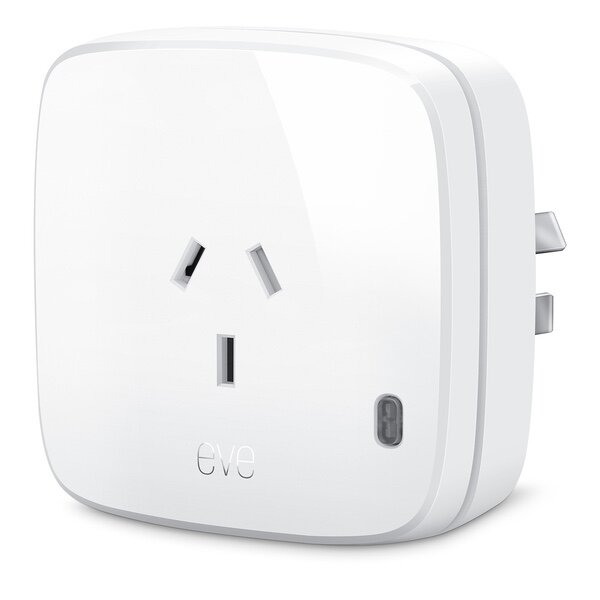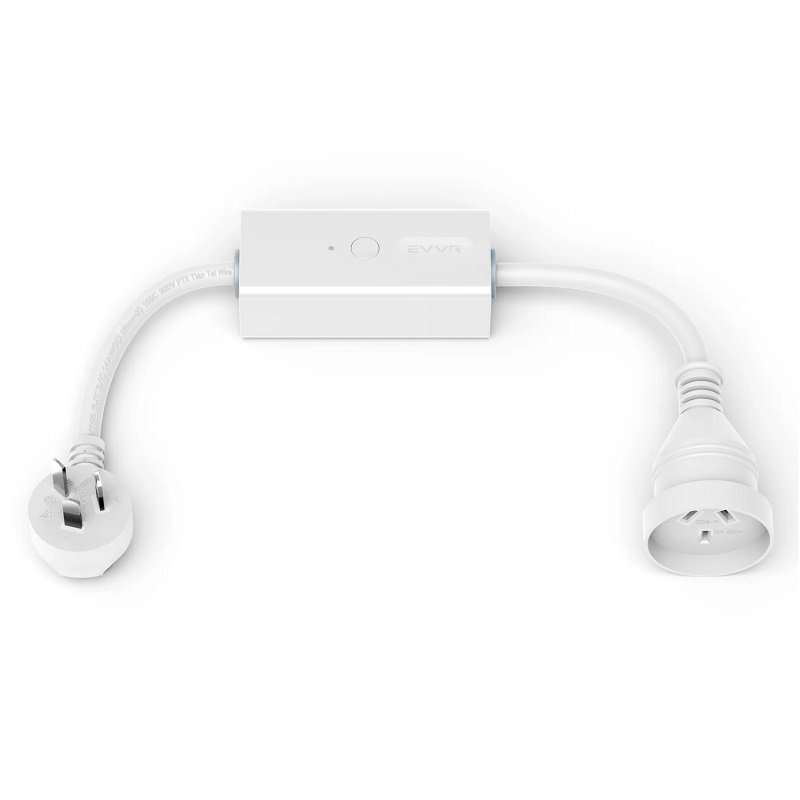Meross MSS310 Smart Plug: Review
When you buy through links in this article, I may earn an affiliate commission. Learn More.
The sample provided for this review was provided by Meross.
Tested with scoring system 1.0
What do these scores mean?
Learn about our data-driven scoring system.
Pros
✔ Easy to insert socket✔ Simple on/off manual control
✔ Excellent reliability
Cons
✔ Limited smart home support✔ Limited app security controls
✔ Setup could be simplified
The Verdict
The latest smart plug offering from Meross is a competent, reliable performer that gets the job done without fanfare or fuss. With official support for Alexa, Google, and SmartThings for automation, and the ability to control the plug locally through the Meross app there’s not a lot to complain about.
I found the energy monitoring feature to be functional, if a little limited, and the plug consistently delivered through my testing period without any delays, dropouts or failures of any kind. Meross has been known to have fairly ‘chatty’ devices in terms of how much data they send, but the MSS310 proved to be much improved, and communicated far less than other smart plugs I use.
The setup experience could use some modernization, still relying on the old ad-hoc Wi-Fi connection to discover and perform the initial connection, this can cause headaches on some routers, and is prone to timeouts and other frustrations. It didn’t cause me any major issues, however, nor did the Meross app. Although a little basic, it’s simple enough to not need too much messing around to get up and running.
If you’re looking for a smart plug that just works, and the smart home platform is one of the three supported, you can’t go wrong for the price.
Plug Types: EU, UK, AU
Connectivity: Wi-Fi 2.4GHz
Price Segment: $$$$
Test Results
Each smart plug I review is put through a series of repeated test cycles over a 30-day period. These tests give me 11 data points that make up the 7 overall category scores above. These scores rate each smart plugs key performance requirements like responsiveness, reliability, energy monitoring and the overall user experience.
Here’s how this smart plug ranks compared to the average of others I’ve tested:
| Data Point | This Model | Average Score |
|---|---|---|
| Setup Experience | 6.0 | 7.8 |
| Response Time | 9.0 | 8.5 |
| Native App | ||
| Third-party | ||
| Voice Control | ||
| Automation | ||
| Energy Monitoring | 6.8 | 7.2 |
| Reliability | 10.0 | 7.6 |
| Retries | ||
| Reboots | ||
| Full Reset | ||
| Privacy and Security | 3.3 | 7.0 |
| Internet Usage | 9.5 | 5.7 |
| 28 day download | ||
| 28 day upload | ||
| App Experience | 5.6 | 7.5 |
The Basics
Tech Specs
Connectivity: Wi-Fi 2.4GHzLoad Rating 120V: N/A
Load Rating 220V: 10A/13A
App Account Required: Yes
Energy Monitoring: Yes
Overload Protection: No
Outdoor Rated: No
Compatibility: Alexa, Google, SmartThings
Footprint (WxH): 67mm x 67mm
Notable Features:
- Schedules
- Sleep Saver
The MSS310 is a basic model smart plug designed for 220/240V markets. The target market means larger plugs, and thus a large body design. That said Meross has managed to keep the size relatively small, but it’s still going to block adjacent sockets in most cases.
This plug features energy monitoring and a 13 Amp load rating in the UK but is limited by regulation to 10 Amps on the Australian model. Meross touts a flame-retardant ABS casing, but there is no overload protection or other features on board.
Connectivity is via standard 2.4GHz Wi-Fi only, and pairing is by the same using an ad-hoc local network during the setup process. With this complete, you can connect the plug to Amazon Alexa, Google Home, or Samsung SmartThings through the Meross cloud. Local control is available, but only using the Meross app.
The Meross app provides the wenergy monitoring functionality, which is not exposed to other services, and allows for creating local schedules if you choose to do that outside of any third-party integration.
Setup Experience
Setup requires the fairly dated method of the device created an ad-hoc Wi-Fi network which you must manually connect to with your phone. This is then used to transfer the credentials for your network and setup the device. This works but is prone to discovery issues with some dual-band routers, timeouts and other minor annoyances.
I experienced such a timeout when trying to pair the MSS310 the first time and had to start over. The second attempt was successful as I knew what to expect and was able to execute the steps faster. That shouldn’t be a requirement as a first-time customer. These factors cost Meross in the scoring, but the process itself is well described and illustrated in the app which helped lift the score for this category.
Responsiveness
A smart plug that responds fast enough to not leave you questioning if it’s going to or not is a necessity. Smart plugs in general have come a long way and most a pretty good now. Local control obviously provides an advantage here, and we see that with the super-fast response times using the Meross app on the local network. I recorded a very consistent 0.1-0.2 second response here, which is virtually instant.
Surprisingly, third-party apps were also very responsive, only increasing this time to an average of 0.64 seconds. This was also very consistent and I had no indiciation there was going to be any abnormal delays over time. Voice assistant and automation responses were reasonable, ranging between 1.2 and 2.3 seconds across both tests. This is good considering these both require cloud processing to complete.
Energy Monitoring
I found the energy monitoring feature in the Meross app to be functional, but a little basic. It’s on par with many other smart plug apps but falls short on some features that the top-rated ones, like Eve, offer. Specifically, there’s no trend or energy cost projection, or different time-of-use costings that can be used. It’s just a single flat rate.
The graph is clear and can be switched between different view levels. Daily, weekly, monthly, or yearly graphs can be checked, with a simple time period selection below to choose a specific day/date period. It’s not at all apparent, but this selector can be scrolled to access dates prior to that displayed on the screen.
The graph itself is fixed and can’t be swiped or zoomed in any way. Specific values can be inspected by tapping and holding the bar on the graph, but instead of selecting the value to display it simply goes away when you let go. You can however swipe along the graph (so long as values are present under your finger) to display each of them without having to tap each one.
It’s possible to export a custom date range. You’ll get an email with a link to a CSV file containing the data. That can then be imported into another app to analyze further. Interestingly this comes from an AWS cloud link and remains there for 7 days.
Very basic energy cost estimation
Daily energy consumption
Monthly energy consumption
Reliability
There’s only good news here. I’ve experienced no issues with the performance of the MSS310 at all. It’s worked consistently and has never failed to respond to a command from any source. This results in a perfect score for Meross in this category.
I have had older Meross plugs stop responding and need a reboot in the past, albeit after a long period of use. If this occurs at a later date, I’ll update this article to reflect that.
Internet Usage
Some smart devices are very ‘chatty’. Sending or receiving excessive amounts of data over the internet is a sign of concern for privacy, security, or both. Based on an analysis of various smart devices I’ve based this score on a comparative combined total of 100MB over a 28-day period. That sounds like a lot, but it goes to show how much our smart devices are phoning home. I’ve considered 100MB the absolute maximum allowed to achieve any score in this category.
Meross scores well on this point, with a combined total of only 5.54MB sent and received. This is an improvement over earlier Meross devices, and far better than some other smart plugs and sensors I have running at the moment.
Privacy and Security
Meross is not known for their excellence in data protection. They’ve previously been caught with embarrassingly basic security oversights on their smart plugs, such as unencrypted Wi-Fi credentials and exposed admin access with default passwords. Those specific problems do not appear to be present with the MSS310, but the Meross app offers very little in terms of security controls.
Access to the app is via a simple username/password combination, and this needs to be re-entered periodically. There’s no two-factor authentication option, no device sharing or access control which encourages password sharing of the one account if multiple people need access.
Firmware updates are notified in the Meross app, but there’s no push notification or automatic update feature. This can leave devices exposed to exploits for extended periods the Meross app is not regularly used. The lack of many of these features unfortunately results in a fairly low score here.
App Experience
As with other app-related metrics, the app experience score is brought down by the simple nature of the Meross app.
While navigation is fairly straightforward, this is largely down to the lack of features more than a tight design. There is little contextual assistance or explanation for most things. Features like “Standby Killer” are presented as a simple toggle switch with no added information, and the user profile page is more about promoting Meross than providing much account control.
Adding new devices, creating schedules, and locating the user manual are all easy to find, and the device options, such as they are, are all located under a single menu. You won’t have trouble figuring out the app in this case, but on the whole it just feels basic and unpolished.
Device options are in a single place
Not everything is clearly explained
Not much else to worry about
Alternatives
Better Monitoring

Eve Energy
8.7 Overall Score
Eve offers some of the best energy monitoring functionality on the market, with responsive scrolllable graphs for not just consumption, but cost projections as well that are based on a selected past usage period. This data is made available to third party apps as well, and as the device connects via Matter over Thread, it can be used with any smart home that supports this new standard.
Awkward Spaces

EVVR Smart Plug
7.7 Overall Score
An unusual design for a smart plug, the EVVR Smart Plug has a short tail on each end that allows for placement both in tight situations behind furniture, or where you don't want to block an adjacent socket. The enrgy monitoring is very basic, but the convenience might win the day for some.
Common Questions
Where is Meross based?
Meross is a Chinese tech startup founded in 2016 and based in Chengdu, China. Meross has 2 main investors: Chengdu Hi-tech Investment Group and the Beijing based Dingxiang Capital.
Does Meross have HomeKit models?
Yes. Many Meross products natively support Apple HomeKit. Meross has several smart plug models with this support, plus newer Matter-based models that Apple Home can also use.







